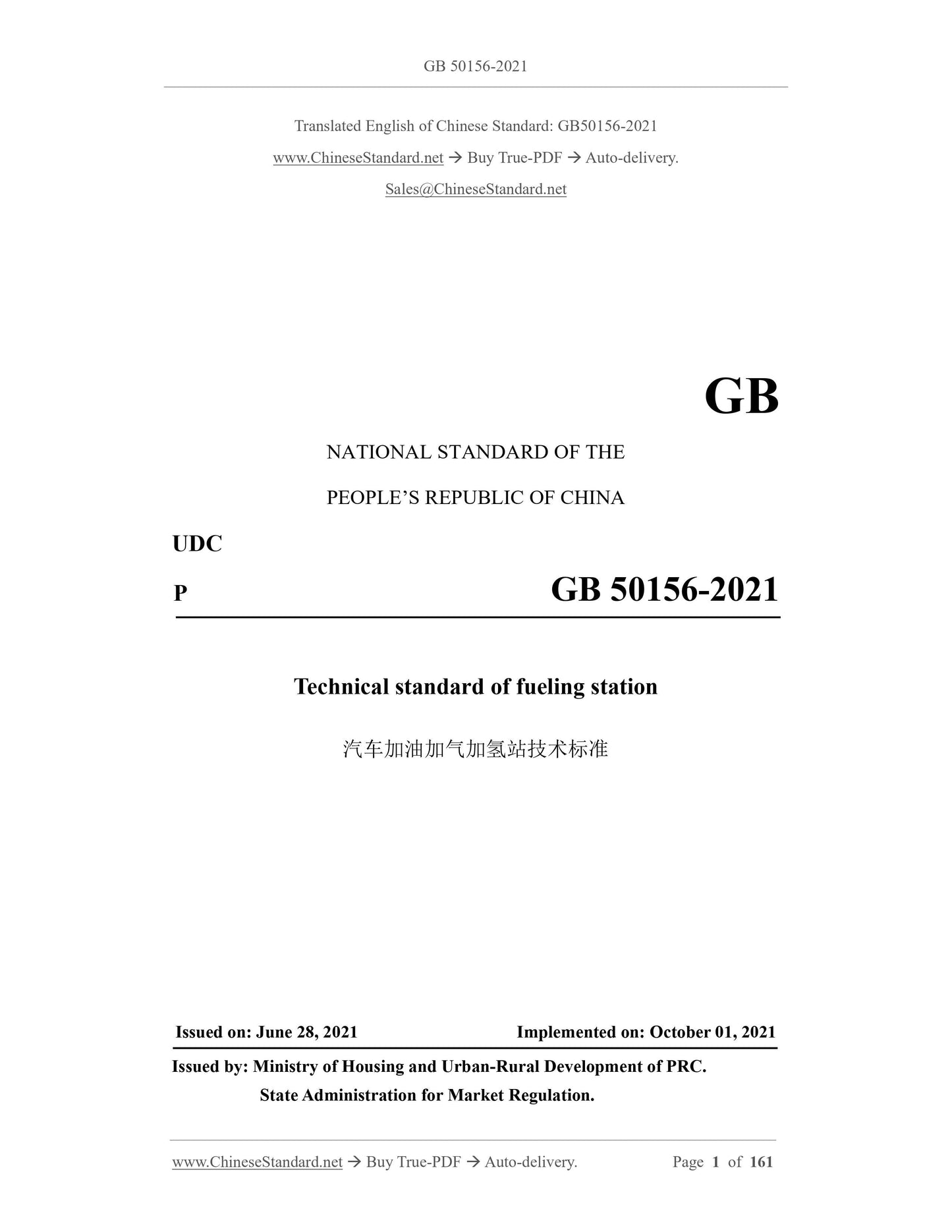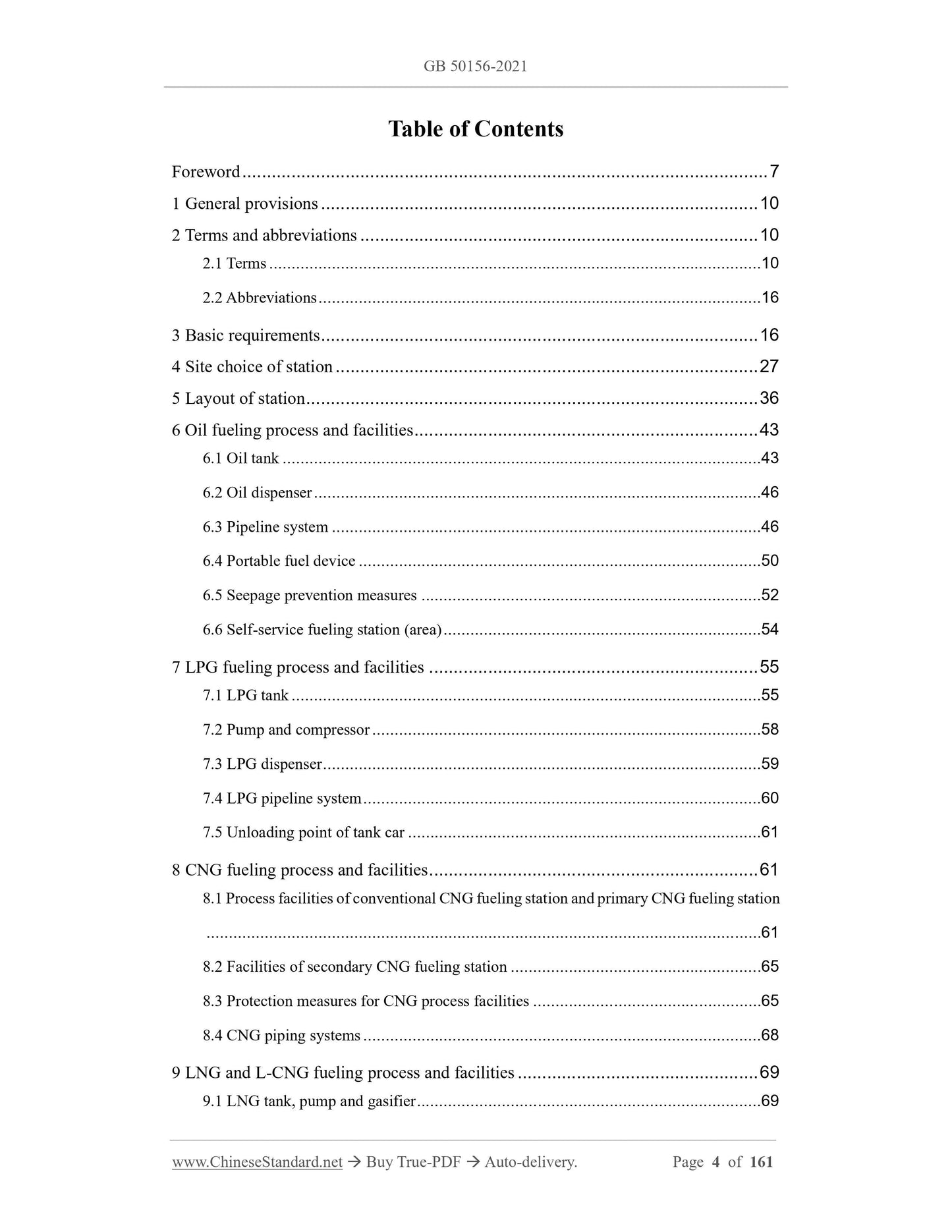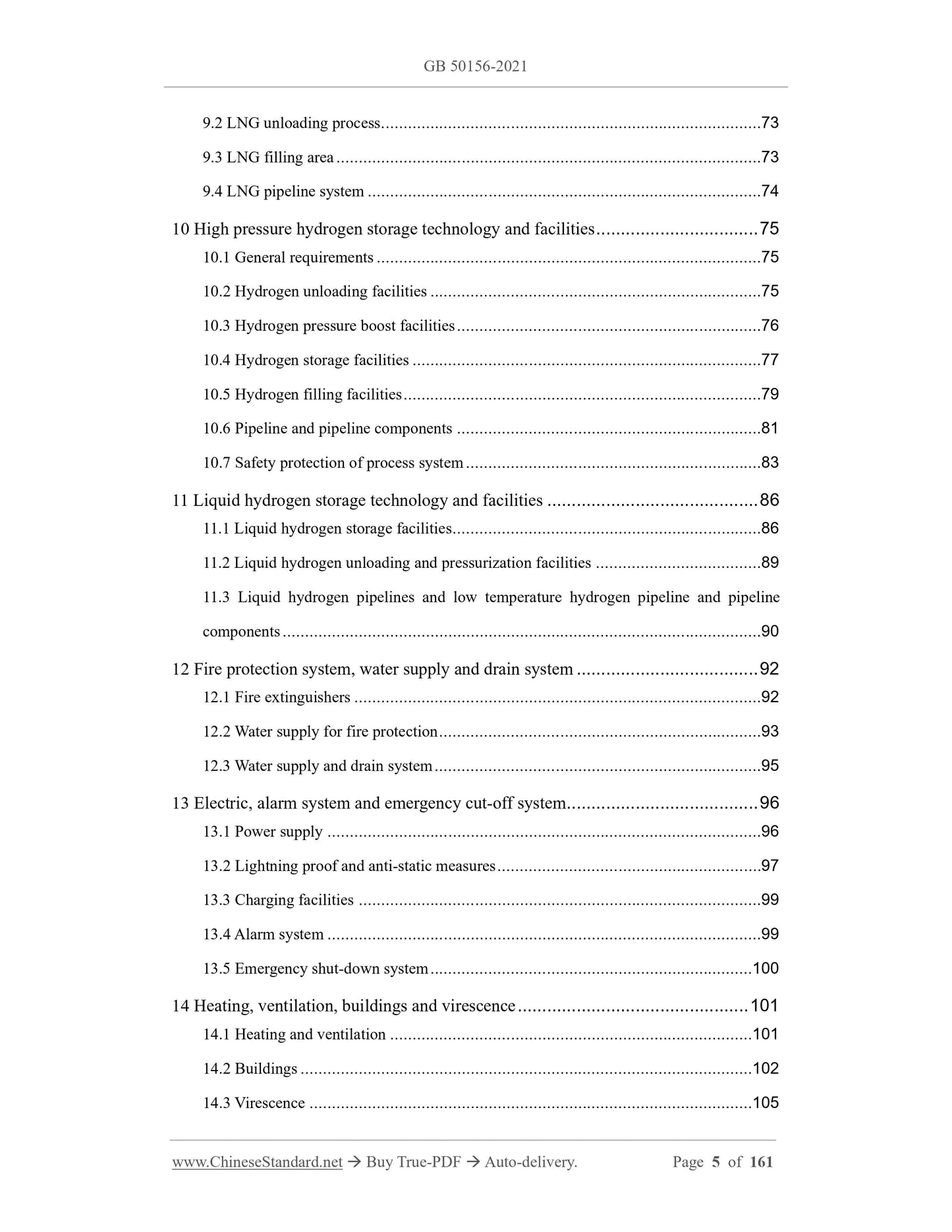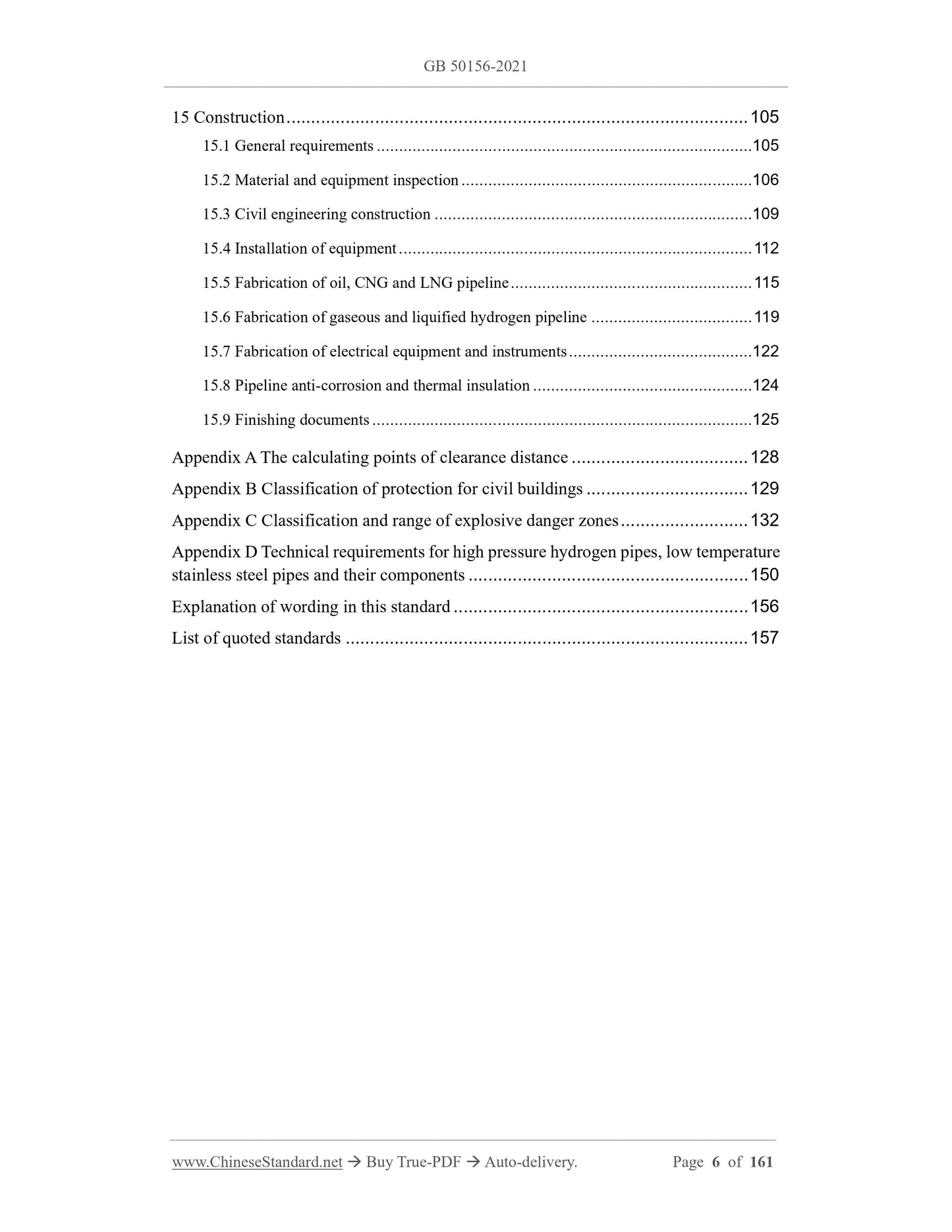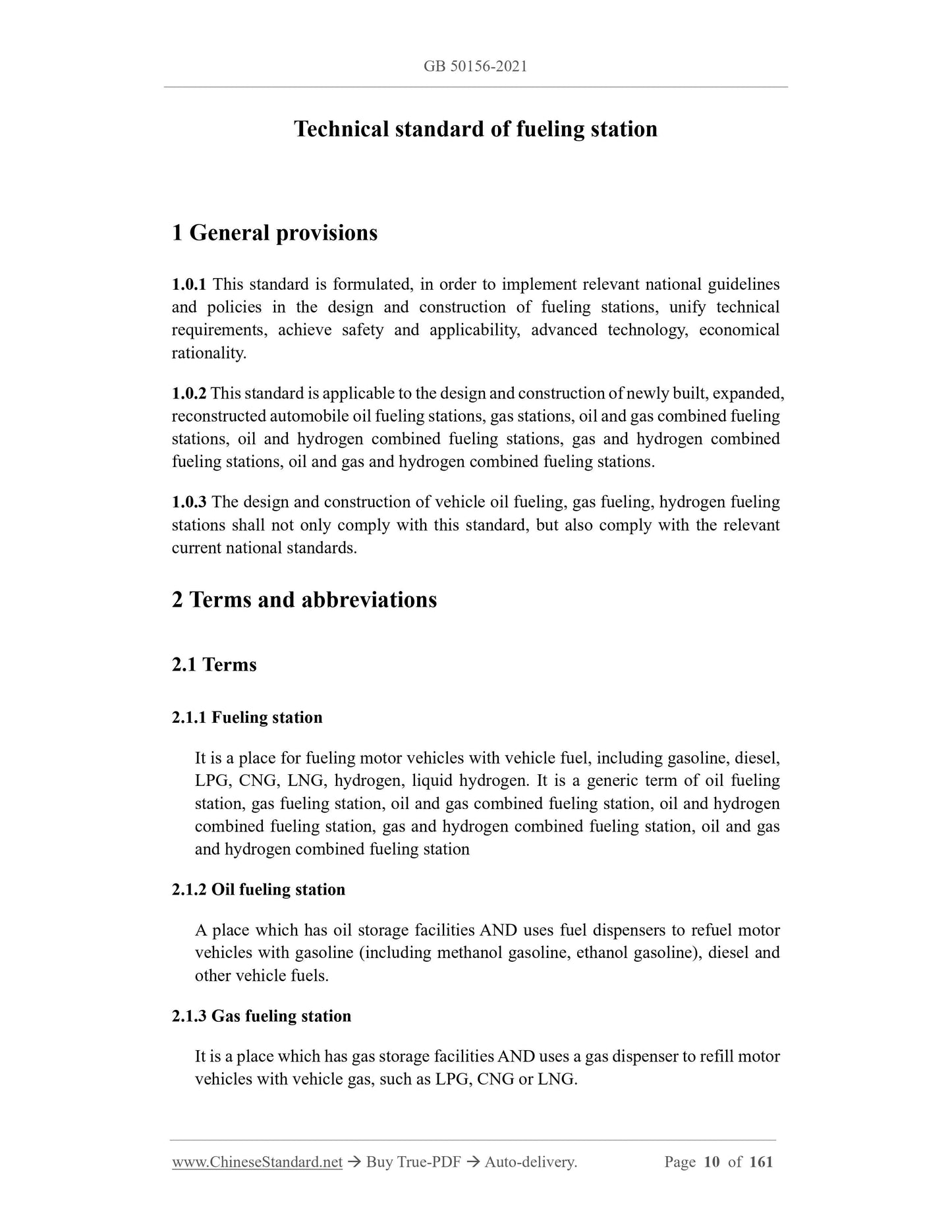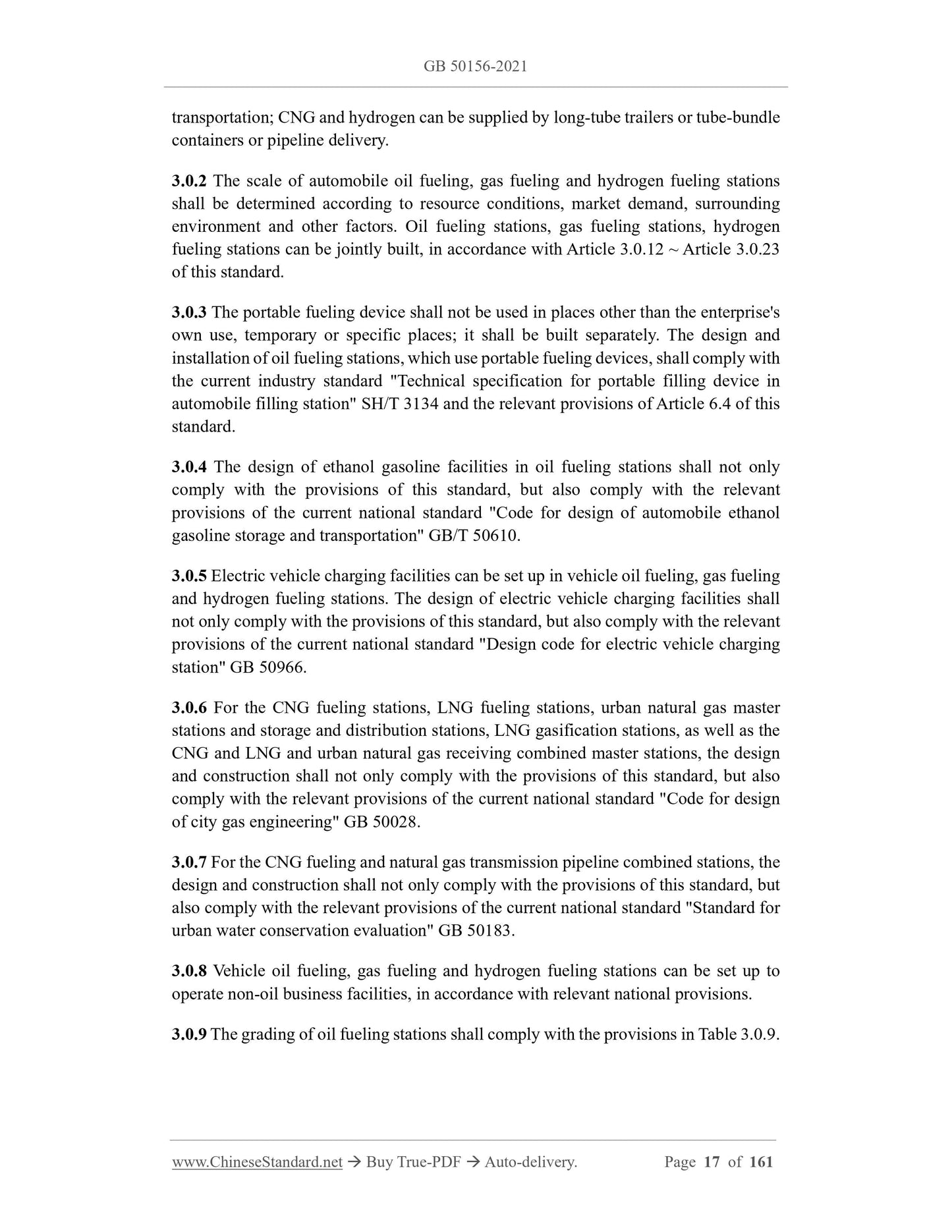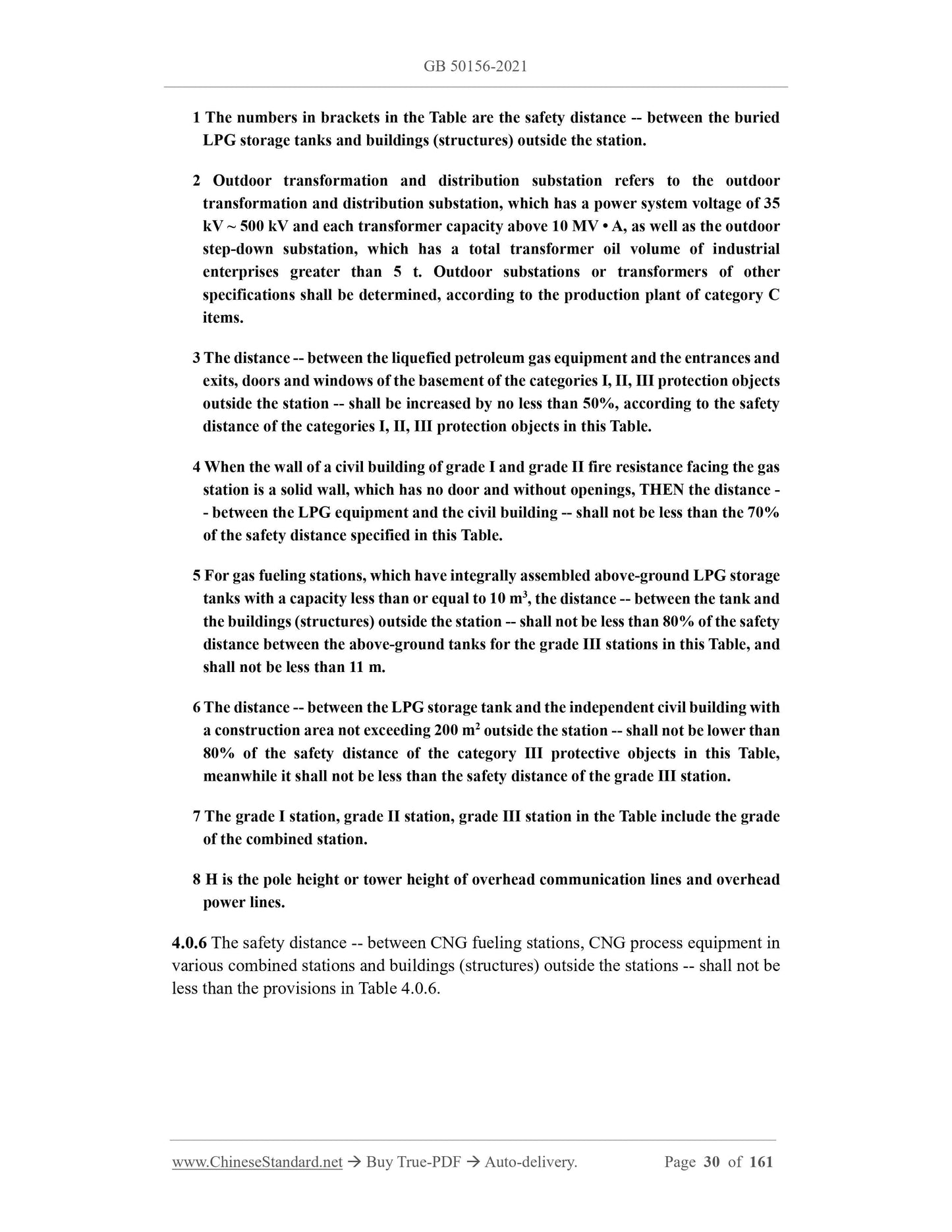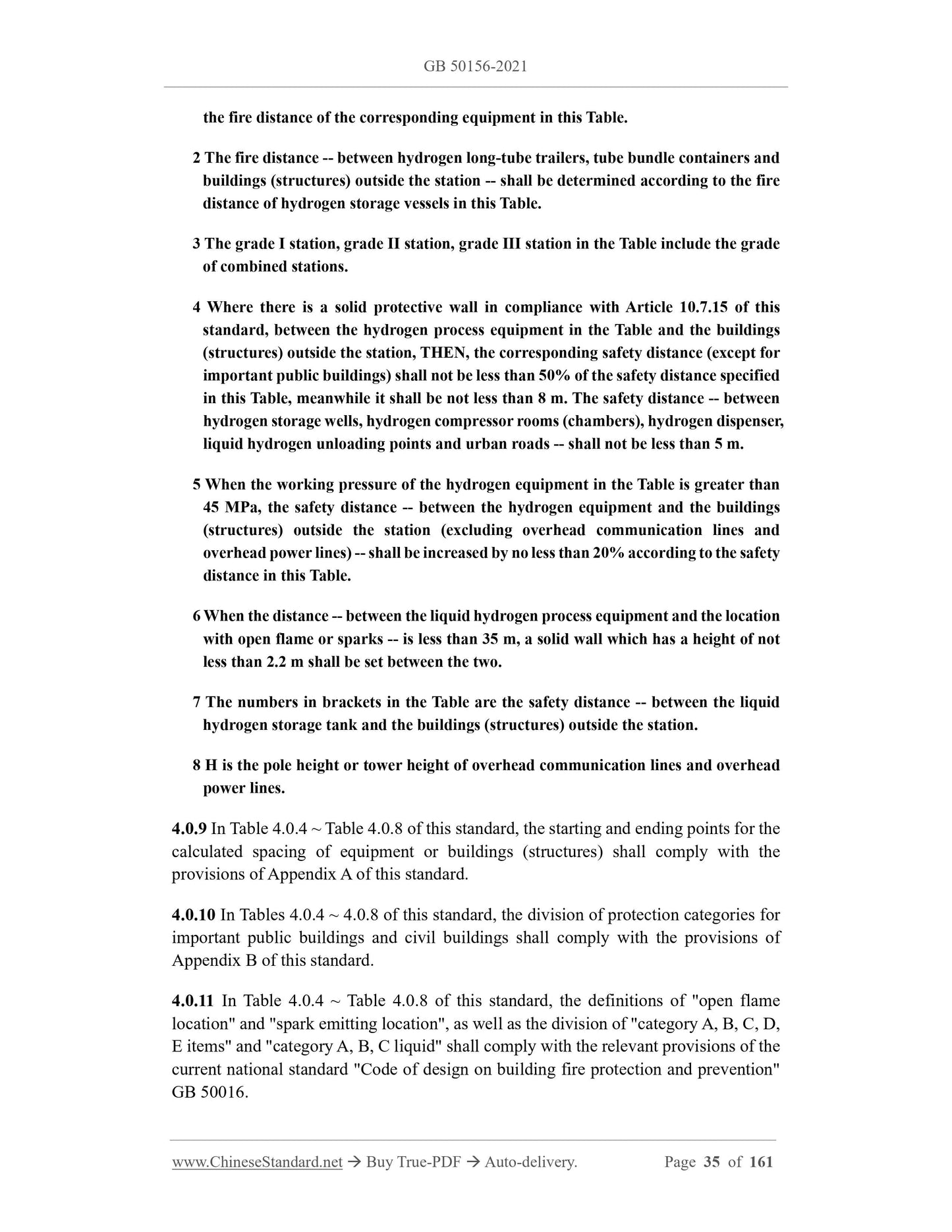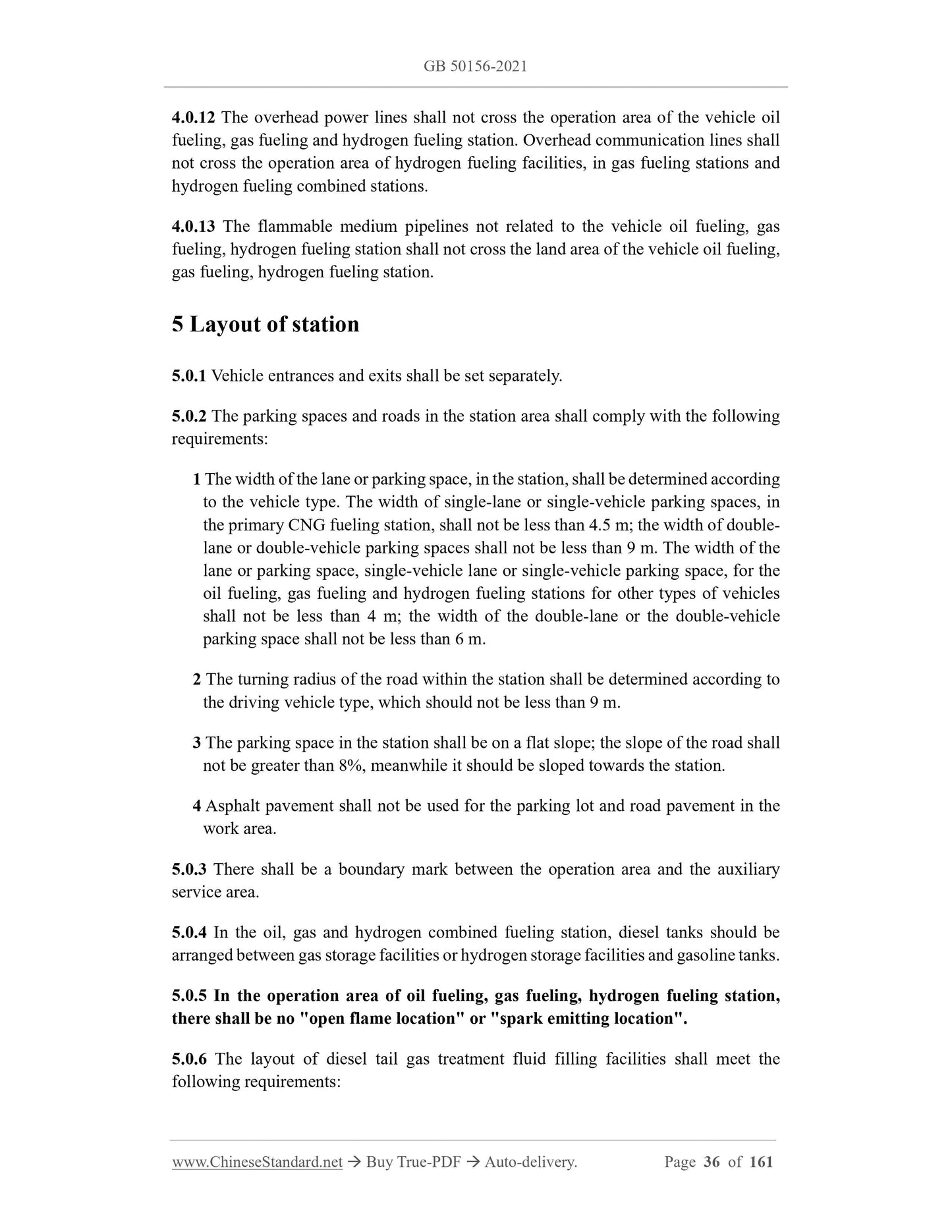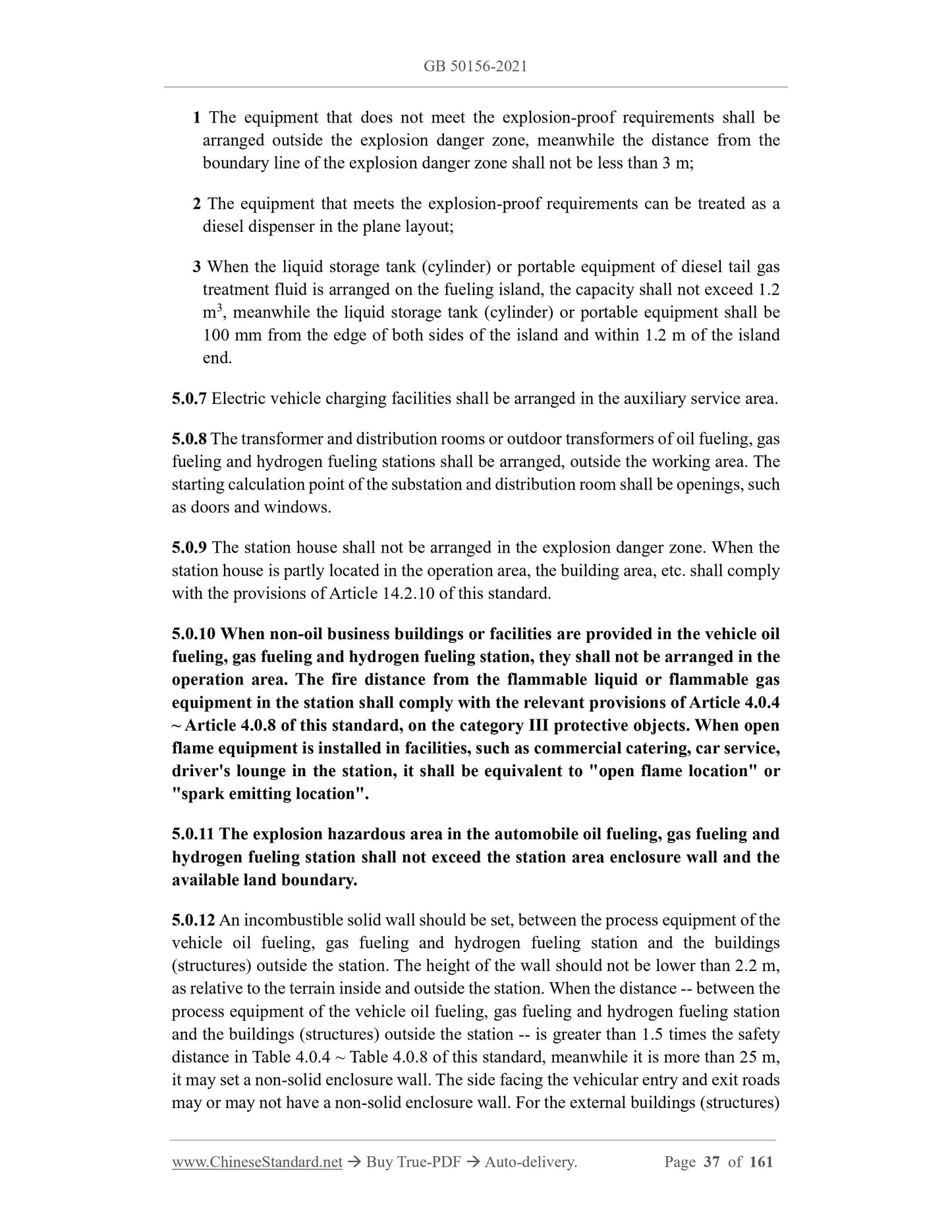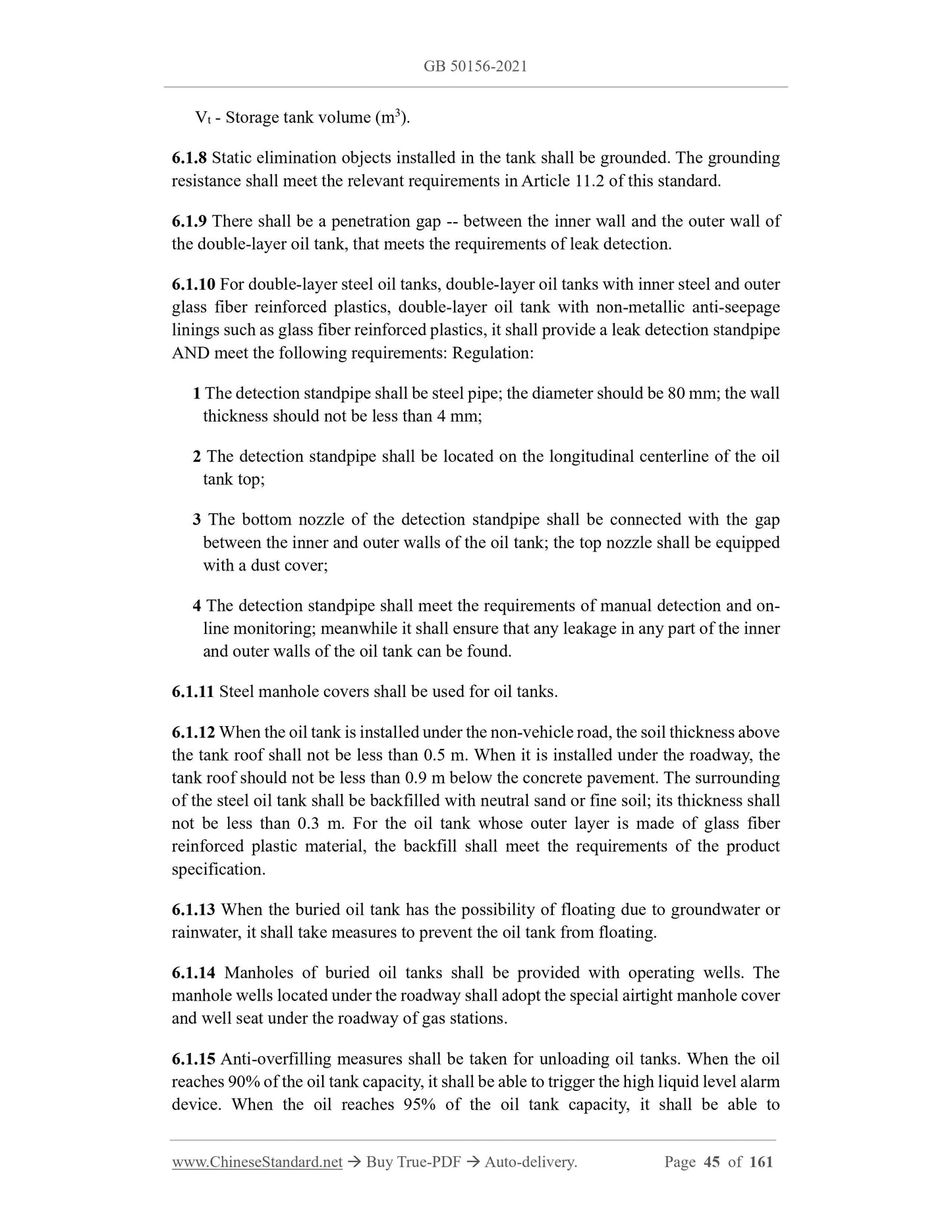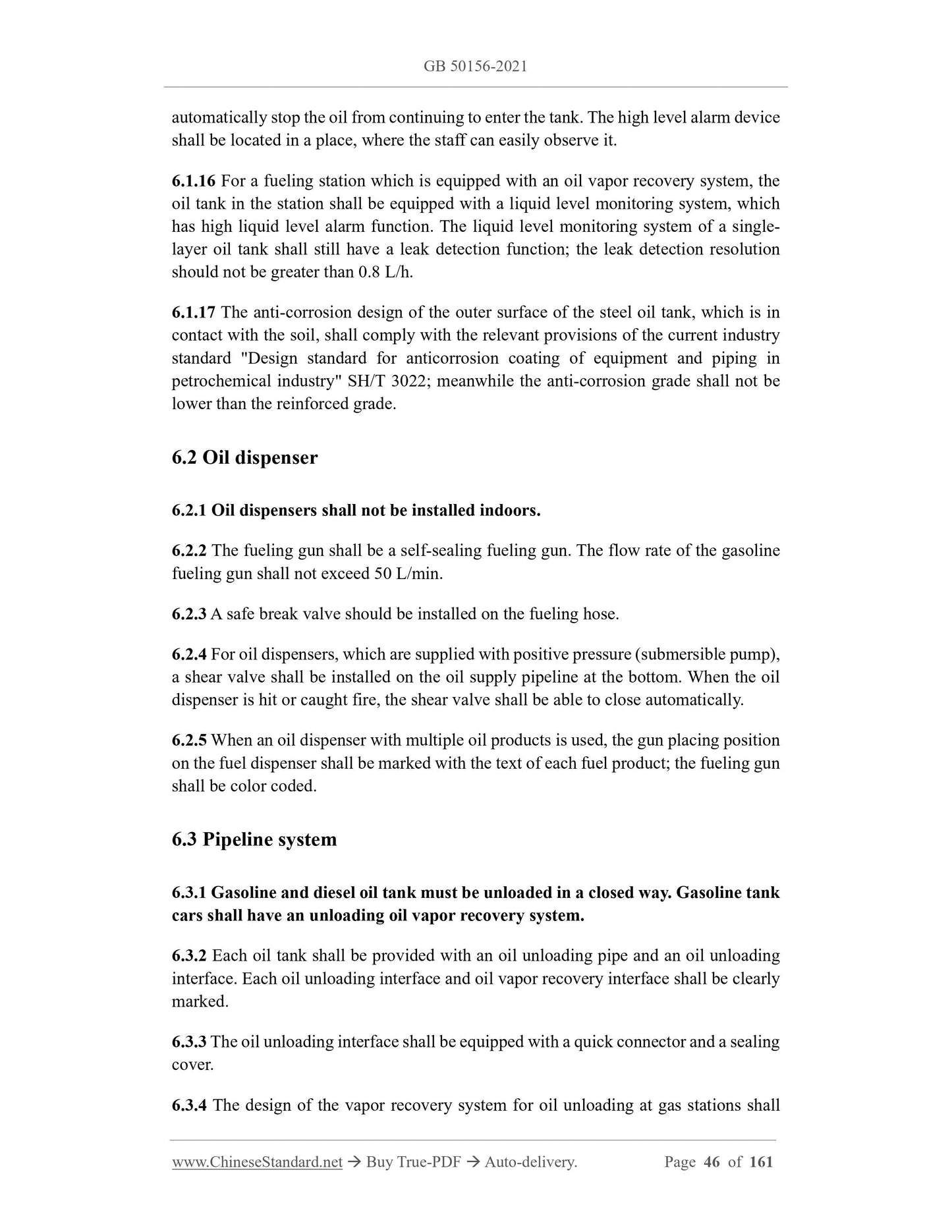1
/
of
12
www.ChineseStandard.us -- Field Test Asia Pte. Ltd.
GB 50156-2021 English PDF
GB 50156-2021 English PDF
Regular price
$1,505.00
Regular price
Sale price
$1,505.00
Unit price
/
per
Shipping calculated at checkout.
Couldn't load pickup availability
GB 50156-2021: Code for design and construction of filling station
Delivery: 9 seconds. Download (and Email) true-PDF + Invoice.Get Quotation: Click GB 50156-2021 (Self-service in 1-minute)
Newer / historical versions: GB 50156-2021
Preview True-PDF
Scope
1.0.1 This standard is formulated, in order to implement relevant national guidelinesand policies in the design and construction of fueling stations, unify technical
requirements, achieve safety and applicability, advanced technology, economical
rationality.
1.0.2 This standard is applicable to the design and construction of newly built, expanded,
reconstructed automobile oil fueling stations, gas stations, oil and gas combined fueling
stations, oil and hydrogen combined fueling stations, gas and hydrogen combined
fueling stations, oil and gas and hydrogen combined fueling stations.
1.0.3 The design and construction of vehicle oil fueling, gas fueling, hydrogen fueling
stations shall not only comply with this standard, but also comply with the relevant
current national standards.
Basic Data
| Standard ID | GB 50156-2021 (GB50156-2021) |
| Description (Translated English) | Code for design and construction of filling station |
| Sector / Industry | National Standard |
| Classification of Chinese Standard | P34 |
| Word Count Estimation | 251,250 |
| Issuing agency(ies) | Ministry of Housing and Urban-Rural Development of the People's Republic of China; State Administration for Market Regulation |
Share
